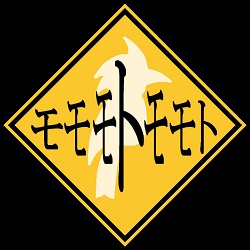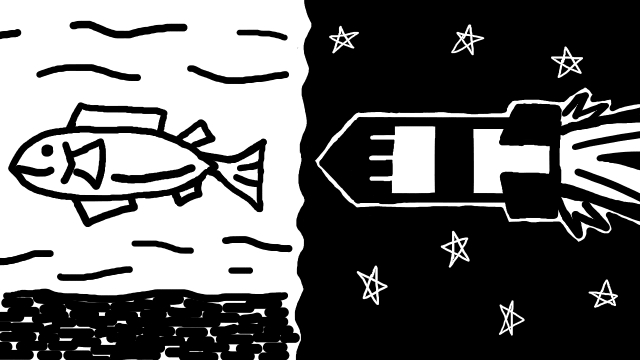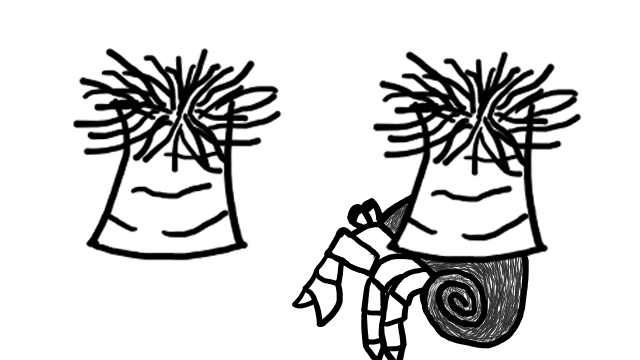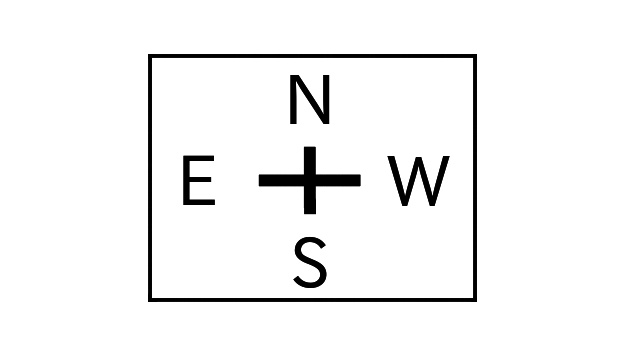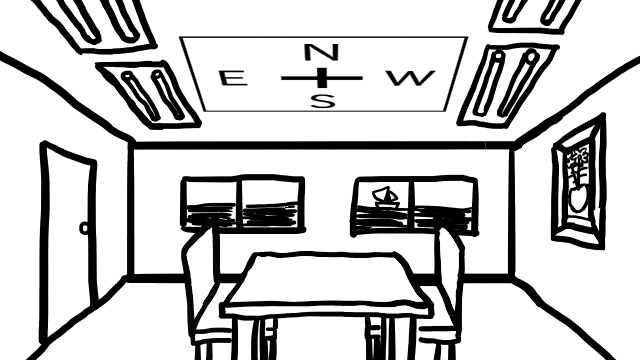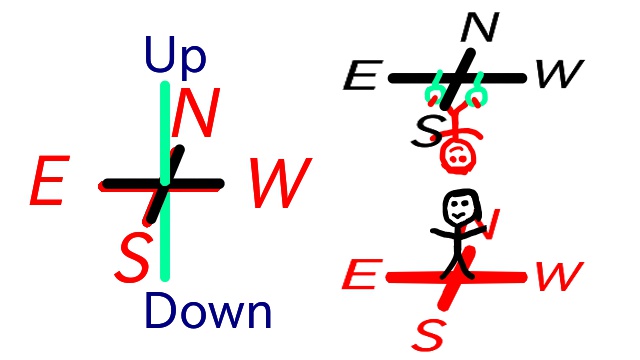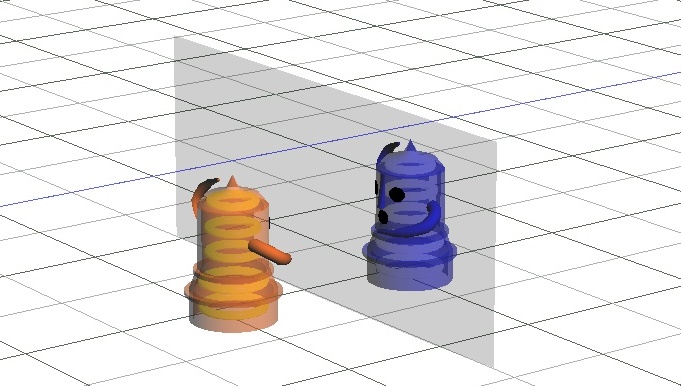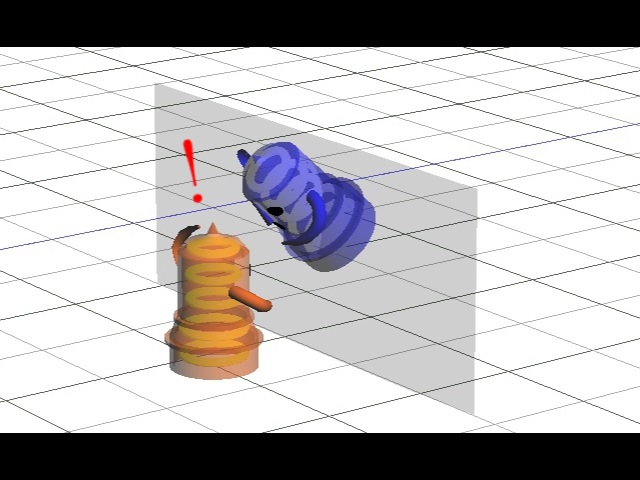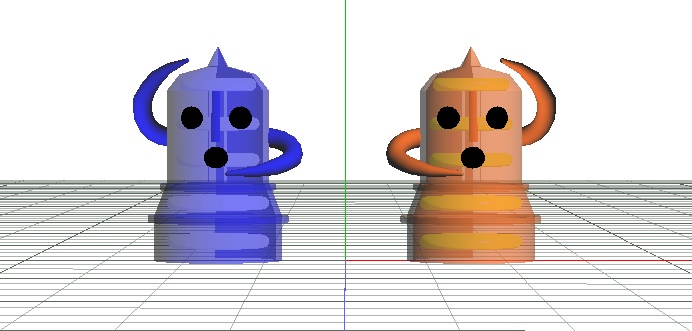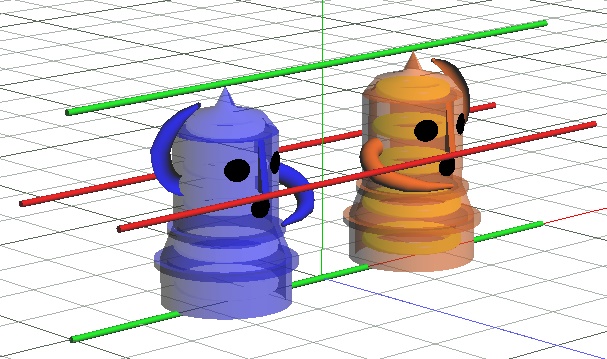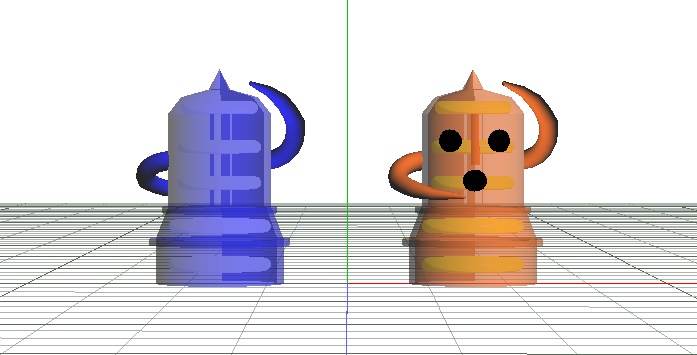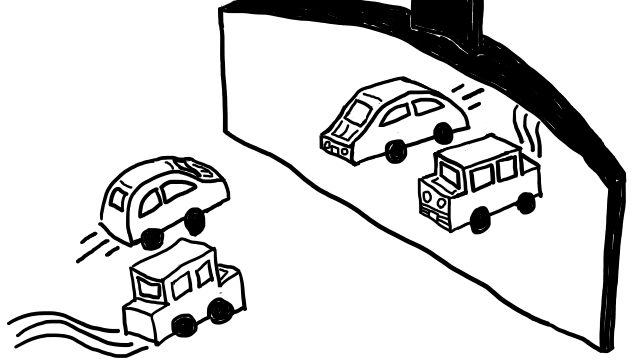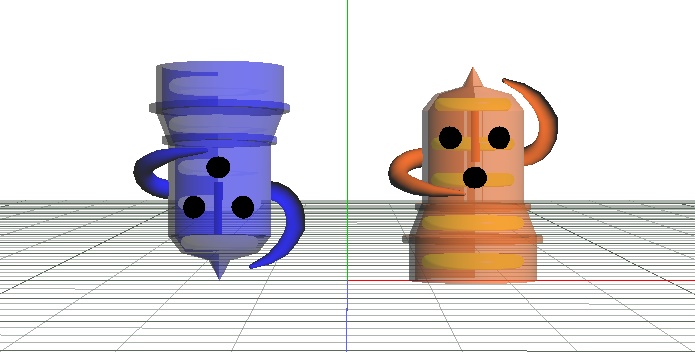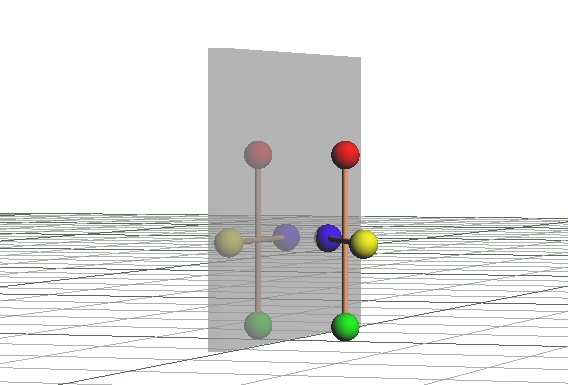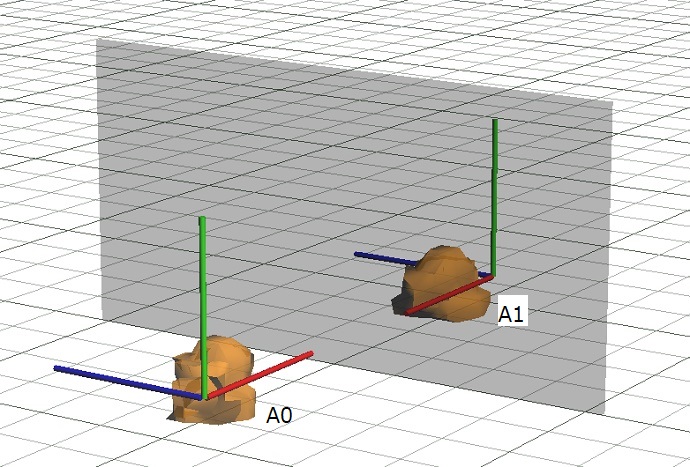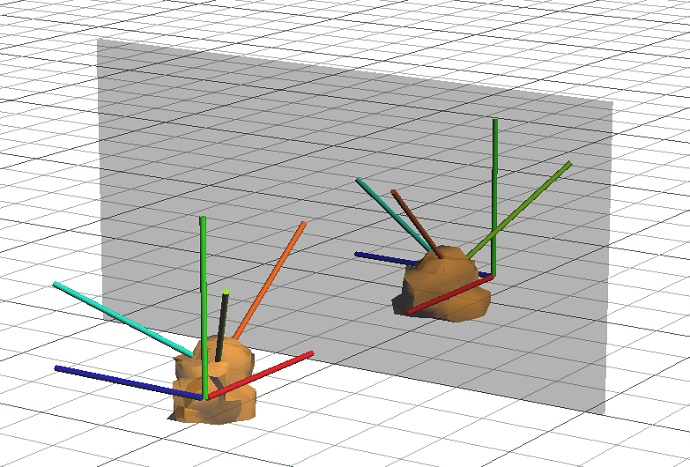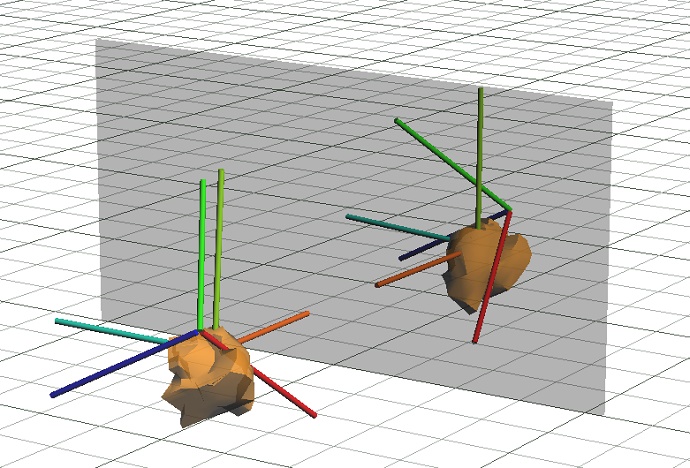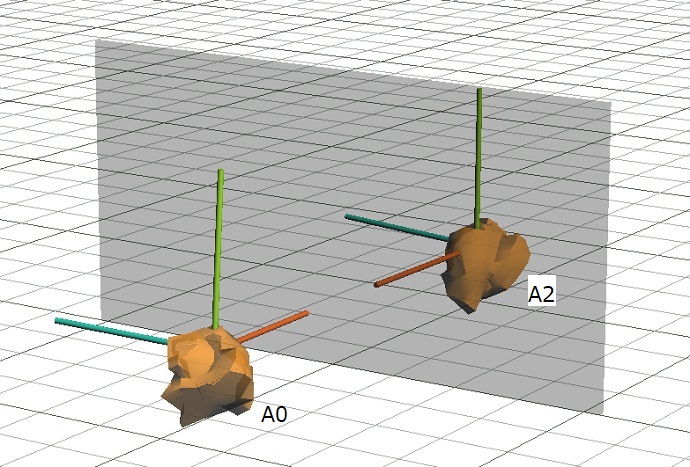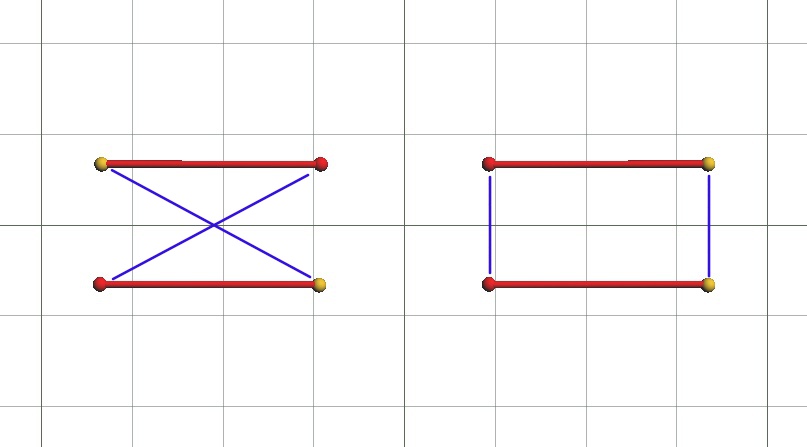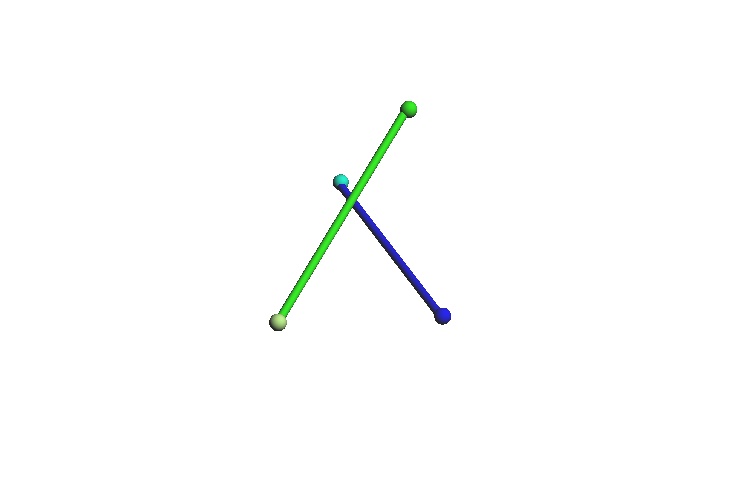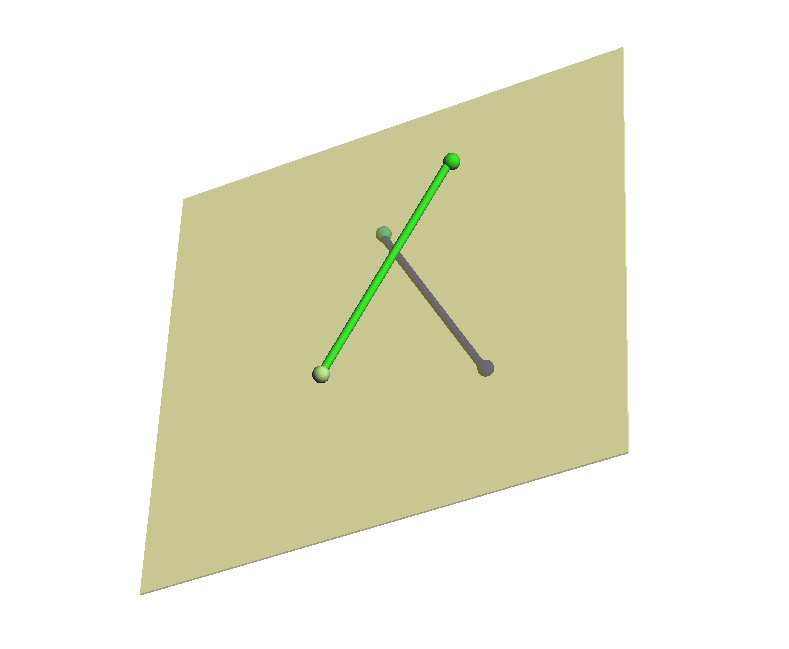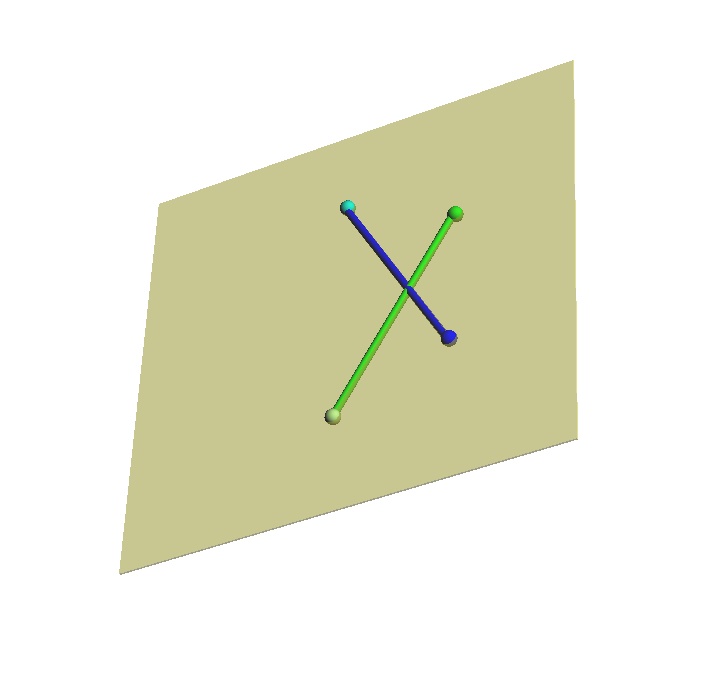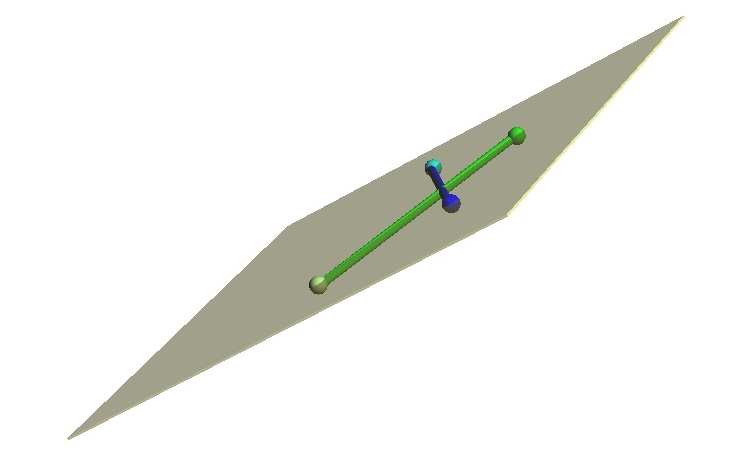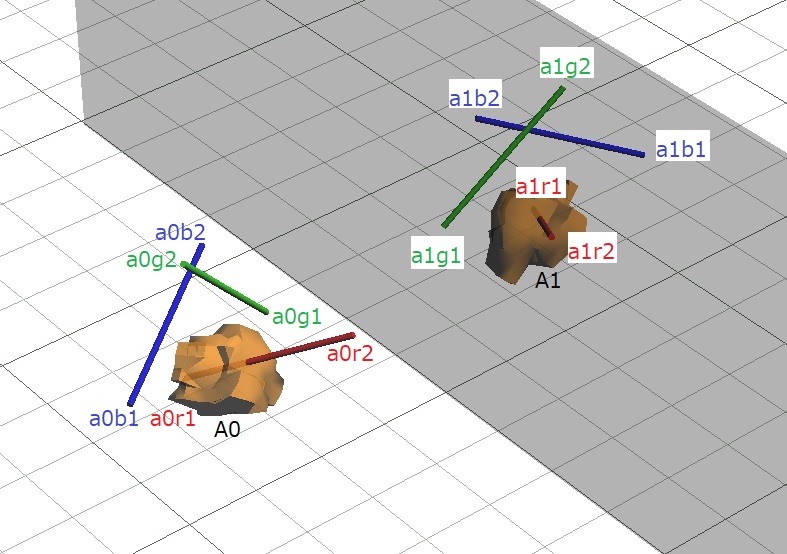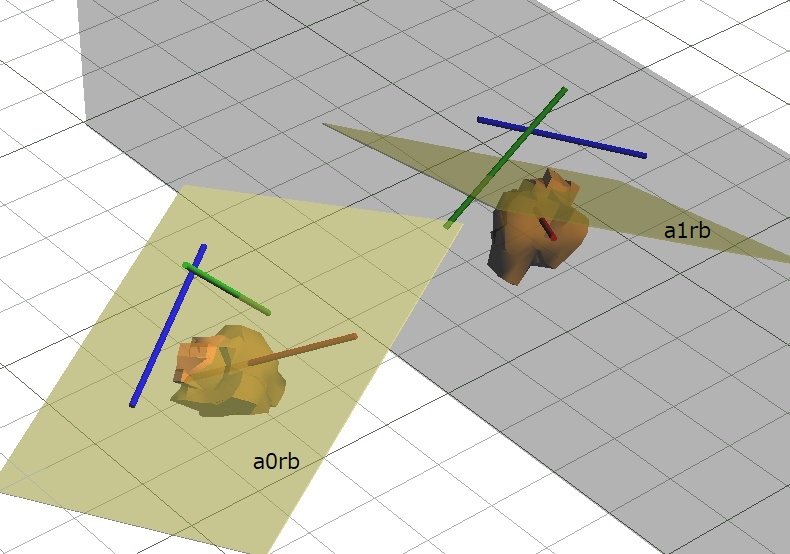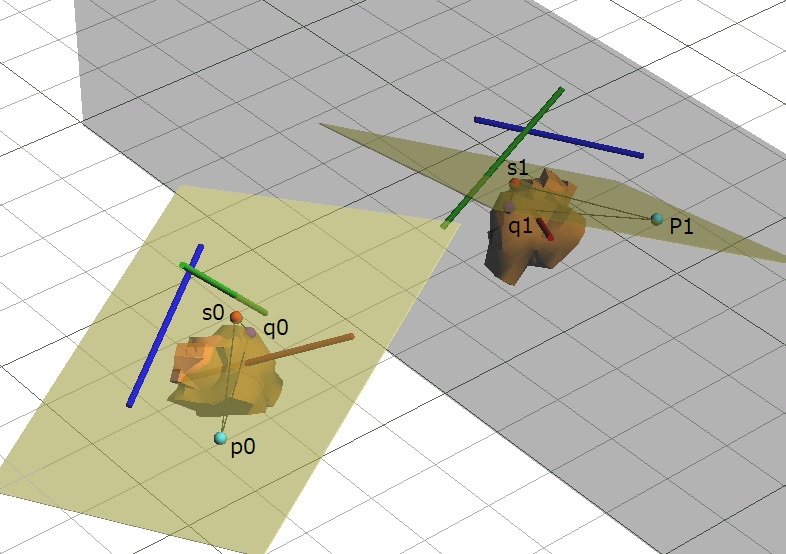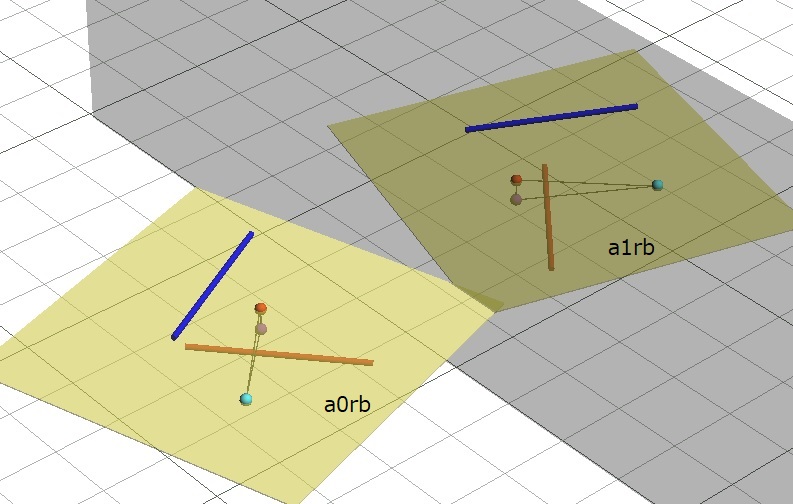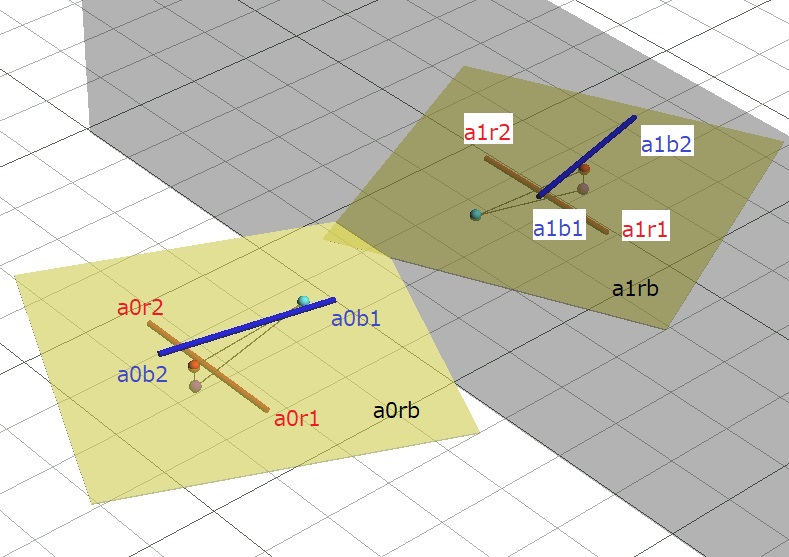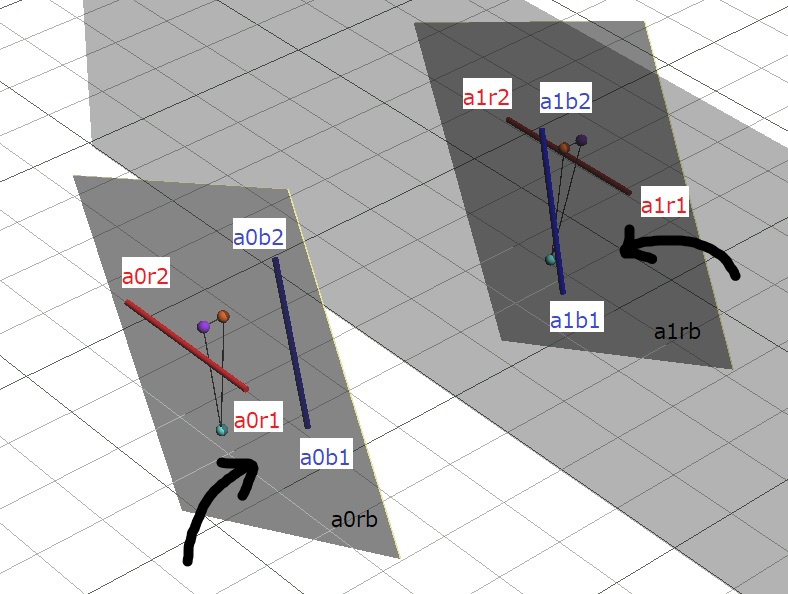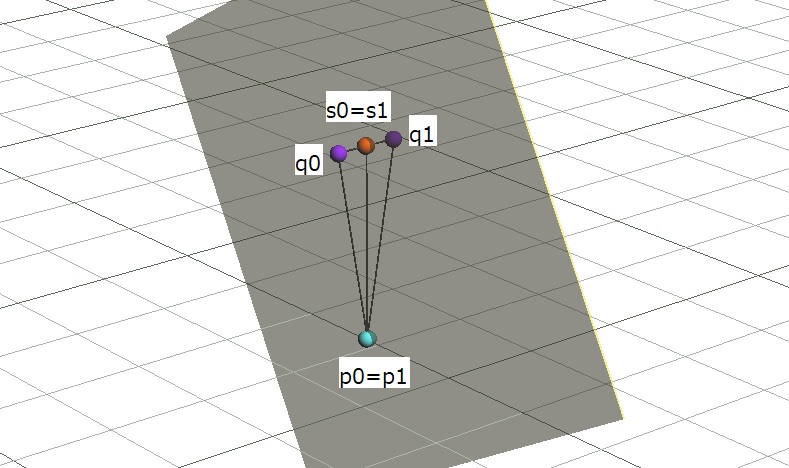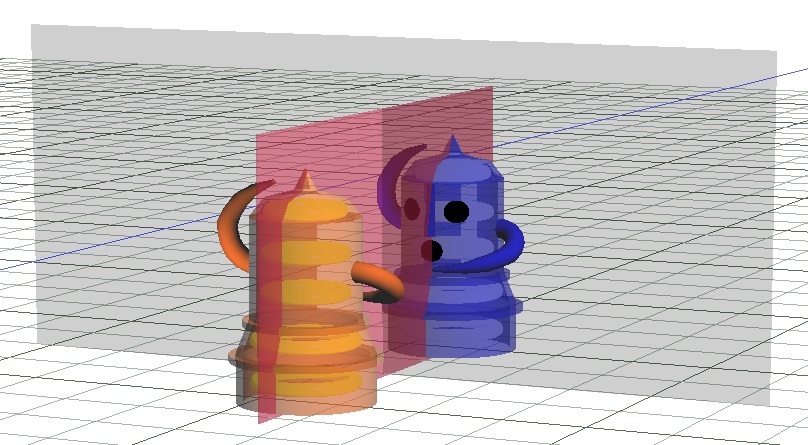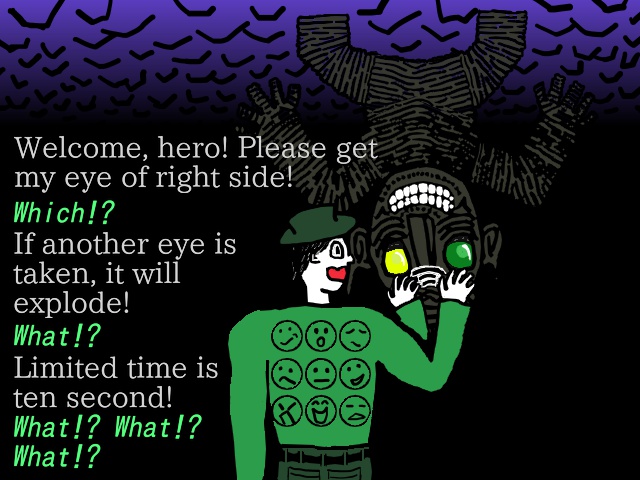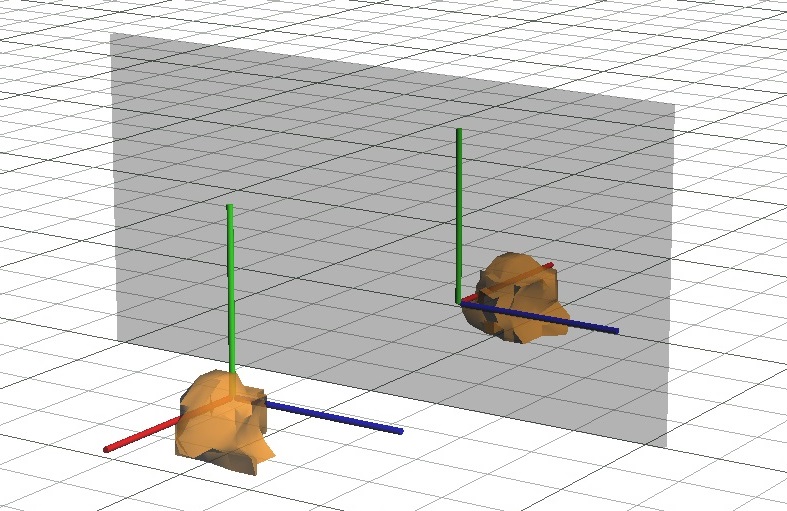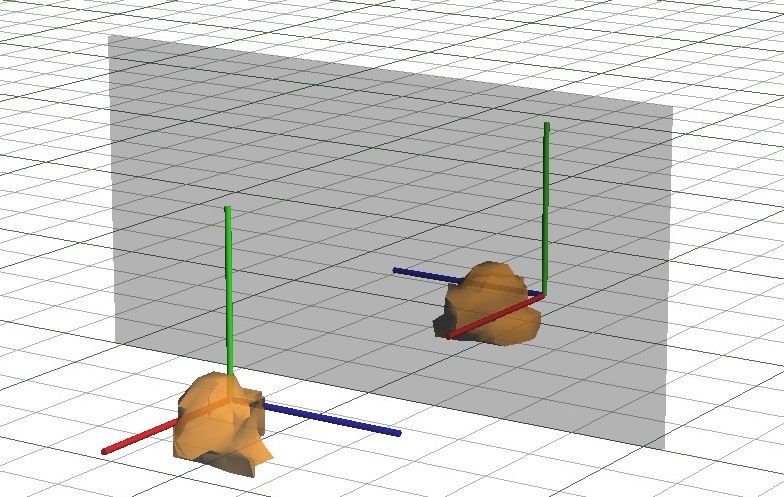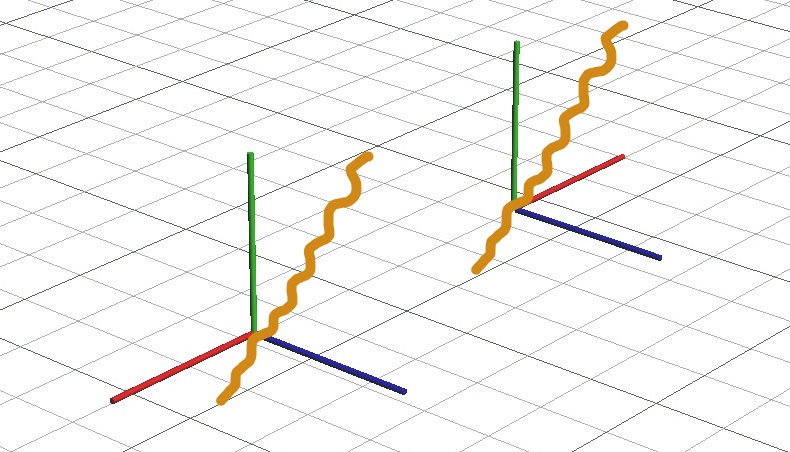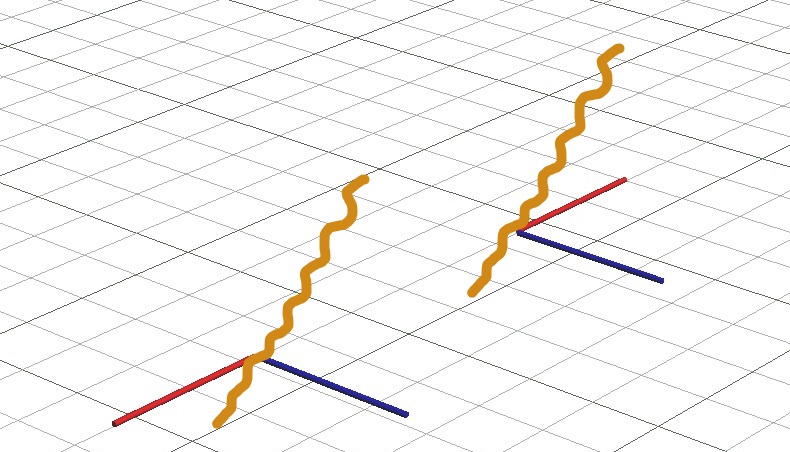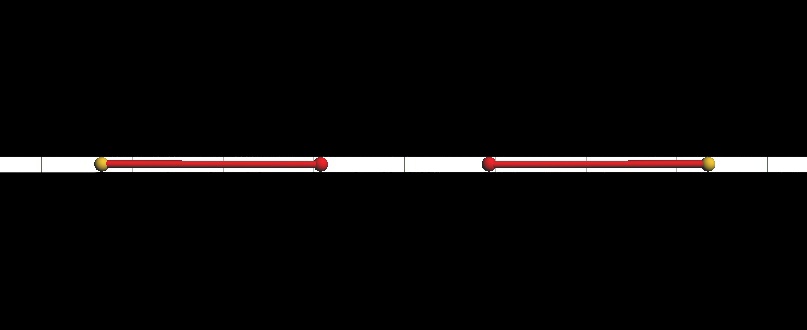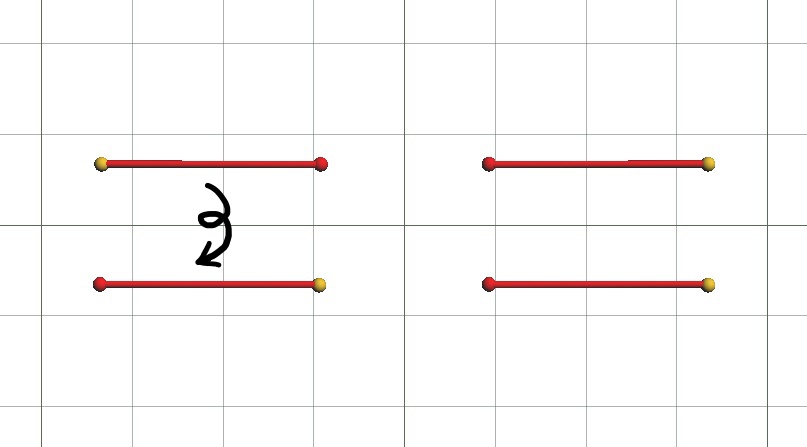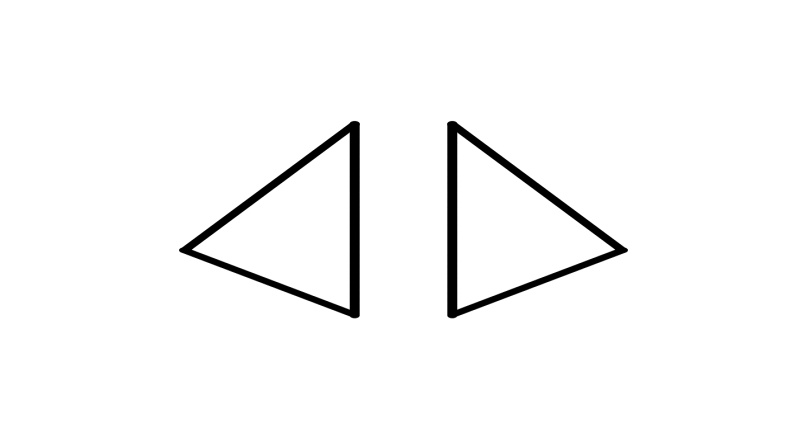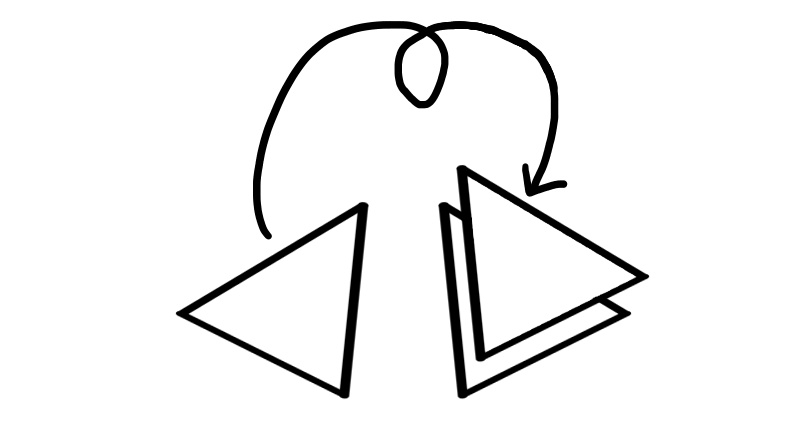I am no good at English, so I don’t know the correct translation of “逆(gyaku)”. Opposite? Contrary? Conversely? Flip? Reverse? Probably there are other grammatical mistakes, I want that you condone them.
This is the translation of a post witten in Japanese, “鏡に左右逆に映る理由、そして次の次元へ“.
Introduction
Why does mirror flip horizontal? I thought this topic a little and wanted to write it on my blog. NHK’s TV program, 「チコちゃんに叱られる!」(We are scolded by chiko, the five old girl!) reported the topic, I don’t watch it, I read sites about it. It seems that the program said the reason was unknown because people have various different views. Now I have thought again and got my ideas about it in shape.
What are right and left?
Its conclusion is we can define right and left after defining up and down, front and behind in the same as the proguram. The following is my idea for it. (How did the program explain this part?)
At first, please look at an under illustration, a fish and a rocket in space.
We can soon understand the left side of this fish is in the front and the right side of it is in the back. However, if we are asked the right and left sides of the rocket, we are confused probably. Please look at a next illustration, a sea anemone and one with a shell on a hermit crab.
If we are asked the right and left sides of the sea anemone, we are confused probably. Howevwer, we seem to be able to answer the same question as for one with a shell on a hermit crab, with consideration of words and its intention.
We understand front-rear direction in regard to the fish and the rocket, up-down direction in regard to the fish is only cleary. And we understand up-down direction in regard to the sea anemone and one with a shell on a hermit crab, front-rear direction in regard to one with a shell on a hermit crabh is only cleary. Therefore, if we know front-rear direction only or up-down direction only, it is difficult to define right and left. When we know both front-rear and up-down directions, we can define right and left.
Now, I talk cardinal points. we turn to the south, we think our right hand turns to the west and our left hand turns to the east automatically. Then, please look at a lower figure.
In this azimuthal chart, east and west are replaced each other. Can’t this be used? No, we can use this as a next illustration.
We paste the ceiling with this azimuthal chart, it indicates correct cardinal points, we can use it. To sum up, when we use cardinal points, we don’t aware up-down direction usually, but we can’t use cardinal points without up-down direction as a following illustration.
The lower person turns to the south, the right hand turns to the west, the left hand turns to the east. However, the upper person turns to the south, the left hand turns to the west, the right hand turns to the east, please check.
Grasping “the mirror flips horizontal”
Well, my main subject starts now. Haniwa, Japanese ancient doll, is reflected in a mirror as a illustration.
And, let’s suppose that the reflected haniwa in the mirror jumps out from there.
When we check these haniwa dolls, I think that we usually arrange them like this illustration.
So, in other words,
1. Aligning each up-down direction of objects
2. Aligning each front-rear direction of objects
3. Checking each right-left direction of objects
Mostly, coming thinking to mind seems this order. So, in this case, an object reflected in a mirror is recognized flipping horizontal. Indicating a little correctly, “An object reflected in a mirror is recognized flipping horizontal only”. In this, “flipping” means comparing objects, there is difference in regard to the center of the object along the direction. However. Do we say the same thing after looking a following illustration?
I have aligned up-down and right-left directions of Haniwa dolls. In this “align” means removing difference in regard to the center of the object along the direction. It is the opposite(逆) of flipping(逆) I told just now.
I make the raising haniwa’s hands the same side in regard to their center along right-left direction when we look at this illustration. In this case, not using “direction”, we may remember parts of body, named on the basis of the pose when human stands, like right hand(right arm), right hand(right arm). I just want you to pay attention to “position in regard to the center of haniwa”, thank you for your understanding. Now, in the case of this arrangement we look at haniwa dolls, we can say that front-rear direction is flipped. In other words, “An object reflected in a mirror is flipped longitudinal only”.
Incidentally, in that TV program, “チコちゃんに叱られる!”, there seems to be a story that driving and watching the car overtaking us with the rear-view mirror, we don’t aware replacing right and left. In this case, please attention when overtaking car passes on our right side, the car passes on our left side in the mirror. (In Japan, car drives the left side of the road.)
This seems to be an example awaring aligning (not flipping) right-left direction next to up-down direction, too.
More, after right-left and front-rear, it is necessary to confirm up-down direction.
I have aligned front-rear and right-left directions of Haniwa dolls. In this case, “An object reflected in a mirror is flipped vertical only”. This is not wrong, is it?
I sum up my explanation until here. The following is cleary concerning an object and reflected it.
Aligning up-down and front-rear directions of them, they are flipped horizontal only.
Aligning up-down and rigth-left directions of them, they are flipped longitudinal only.
Aligning front-rear and rigth-left directions of them, they are flipped vertical only.
Regarding names of axes
And now, in preceding chapter I told three, namely, up-down, front-rear, and rigth-left directions, again I consider certainty of these names.
At first, up-down direction is based on the direction of gravity, but I didn’t tell gravity. Then “front” means the direction which is perpendicularity to up-down direction and which the fish and the hermit crab in the beginning part proceed to, but in preceding chapter haniwa dolls didn’t move. “Rear” is the opposite side of front on an object, front-rear direction is perpendicularity to up-down direction. And, right-left direction is perpendicularity to up-down and front-rear directions. There are the words, “up” and “down”, but there is no gravity in this description, “front” and “back” don’t mean moving direction, therefore, “right” and “left” mean only positions of the side face of the object as “front” and “rear”.
As a result, up-down, front-rear and right-left directions mean “each direction is perpendicularity to other two directions.” only. It should be no problem that these names are changed a1-a2, b1-b2 and c1-c2 directions.
Regarding the character of mirror
For confirming the character of mirror again, I thought a following object.
This object in the mirror is indicated at the next illustration.
Mirror is the material reflecting light. Telling in detail, a surface of a mirror perpendicularly reflects light which is perpendicularity to the surface. As a result, a cross section, which is parallel to the mirror, of an object and its image in the mirror(mirror image) are the same, if we look at them from the side of the original light source.
However, realy on this post, a solid, not a cross section, is brought up. we shall focus on the surface of the mirror and a viewpoint from “a surface, which is facing the mirror, of the object”, in this case, we look at the surface of the object from the opposite side of the original light source.
To sum up, an object and its mirror image are contrary along a perpendicular direction to a surface of the mirror, the front-rear direction. In other words, the character of mirror converts an object along a perpendicular direction to a surface of the mirror, makes its mirror image which is contrary regarding the direction.
Examination about three directions in mirror image, part 1
At first, once again I set a three-dimensional object “A0” and its mirror image “A1”.
Concerning the object and its mirror image, two directions(blue, green), which are parallel to a mirror and perpendicular to each other, are parallel and the same direction lines. And the remaining directions(red), which are perpendicular to the mirror, of the object and its mirror image are contrary. Then, I consider that we can say the same thing about any three directions of A0 and A1, without previous these directions, in other words when two directions from any three directioins, which are perpendicular to one another, of A0 make parallel to the mirror, the remaining directions of A0 and A1 will be always contrary. On A0, I set three directions which aren’t different to previous three directions. New three directions are perpendicular to one another as previous three directions.
In this case, A0 turns for making two directions within three directions parallel to the mirror, the remaining direction is perpendicular to the mirror.
Now, let this mirror image of the object A0 be the mirror image “A2”, A2 is the turned A1, so A2 and A1 are the same object. Therefore, concerning an object set any three directions which are perpendicular to one another and its mirror image, two directions of the original object and its mirror image become parallel and the same direction lines, the remaining directions of them will be always contrary.
It is probably no problem……no, somehow I can’t agree. I accept this phenomenon by intuition, but I can’t agree logically. I think “definitely such result happens so”, but above explanation seems not to answer “why such phenomenon causes” completely.
The mirror image A1 is converted along a direction of the object A0 only. Making two directions of the original object and its mirror image parallel and the same direction lines, why the remaining directions is always contrary also about any other directions equally. Probably, the above don’t completely prove that the mirror image A2 and A1 are the same truly. If I can say “trivial”, how easy! It is trival according to common sense, but I can’t say trival yet. While A1 turns to the position of A2, possibly some transformation at A1 occurs little by little. And if A2 become different to A1, it may be overlooked. Such sence leaves in my mind.
Direction and plane parallel to two line
At first confirming “what direction is” again. Direction is ”a straight line” and has “a starting point and a destination”. Then, “aligning two directions” means making these “parallel” and “the same direction lines”. Rewording latter mathematically, when two directions are parallel, connecting a starting point and another point, a destination and another destination, there is no intersection point. Probably like that.
On our left an example of not aligened two directions, on our right an example of aligened these.
Next, confirming “two directions”. Concerning two directions which aren’t parallel to each other, for plane, there is one direction which don’t intersect two directions. Please note that such plane isn’t only one.
There are many planes which don’t intersect a direction, these are along many directions. My image is that adding another direction which isn’t parallel to the direction sets an only direction of a plane which is parallel to the directions. Another image is that there is a plane including each direction moving parallelly, then two directions intersect each other. If two directions weren’t parallel, above explanation is accepted for these which aren’t perpendicular to each other.
Hereafter using this conception of the plane.
Examination about three directions in mirror image, part 2
Once again, I try to prove that making two directions of an object and its mirror image parallel and the same direction lines, the remaining directions of them will be always contrary. The outline is when two directions of an object and its mirror image are parallel and the same direction lines, two planes which are parallel to each direction of an object and its mirror image become parallel, then a point on the object and its mirror image are contrary along the remaining directions which are perpendicular to these planes.
Concerning an object A0 and its mirror image A1, three directioins of A0 are defined as a0r1-a0r2, a0b1-a0b2, a0g1-a0g2. These aren’t parallel to one another, and these aren’t parallel, perpendicular to the mirror. The mirror images of a0r1-a0r2, a0b1-a0b2 are a1r1-a1r2, a1b1-a1b2.
And, a plane which is paralell to a0r1-a0r2 and a0b1-a0b2 is a0rb, its mirror image is a1rb. Needless to say, a1rb is parallel to a1r1-a1r2 and a1b1-a1b2.
Farther contuning to define, a point on a0rb is p0, its mirror image is p1. The point, p1 is on a1rb. Another point on the object, A0 is q0, its mirror image is q1. The intersection point between a0rb and a line which passes q0 and is perpendicular to a0rb is s0, its mirror image is s1, The point, s1 is on a1rb. And a triangle p1q1s1 is interpretd as an mirror image of a triangle p0q0s0, therefone p0q0s0 and p1q1s1 are congruence.
Now I thoght what a result comes by making a0r1-a0r2, a0b1-a0b2 of A0 and a1r1-a1r2, a1b1-a1b2 of A1 are parallel and the same direction lines. The points, p0, q0, s0 are moving with a0rb, p1, q1, s1 are moving with a1rb keeping the spatial relation of these positions. The following illustration indicates the result.
The plane, a0rb is parallel to a0r1-a0r2 and a0b1-a0b2, so it doesn’t intersect a1r1-a1r2 and a1b1-a1b2 which are parallel to it. Equally, a1rb doesn’t intersect a0r1-a0r2 and a0b1-a0b2. Therefone there is an only direction of a plane which is parallel to a0r1-a0r2 and a0b1-a0b2, then an only direction of a plane which is parallel to a1r1-a1r2 and a1b1-a1b2 too. Because a0r1-a0r2, a0b1-a0b2 and a1r1-a0r2, a1b1-a0b2 are paralell, a0rb and a1rb are the same direction plane, that is paralell.
Regarding points on the object and its mirror image, a plane between the points
Next I try to prove that the points, q0 and q1 are contrary along a direction which is perpendicular to a0rb and a1rb. The outline at this part is as follows:making two directions of A0 and A1 parallel and the same direction lines, in the case of moving each elements symmetrically with the mirror keeping the spatial relation of these positions, because before moving each elements are symmetrical with the mirror, using moving symmetrically only, and after moving the planes a0rb, a1rb are parallel to the mirror, the result is that q1 and a1rb are mirror images of q0 and a0rb, q0 and q1 are contrary along the direction which are perpendicular to the mirror, a0rb and a1rb.
At first, turning the planes, a0rb and a1rb, making them perpendicular to the mirror. Moving a0r1-a0r2, a0b1-a0b2, p0, q0, s0 with a0rb, and moving a1r1-a1r2, a1b1-a1b2, p1, q1, s1 with a1rb, keeping the spatial relation of these positions. The following illustration indicates this result.
At this time, because the plane, a0rb and a1rb are symmetrical, a0r1-a0r2 and a1r1-a1r2 are symmetrical too, and this moving is symmetrical, so these elements are symmetrical too, after this moving. Because the plane, a0rb and a1rb are perpendicular to the mirror and symmetrical with the mirror after this moving, these are the same plane. Then because a0r1-a0r2 and a1r1-a1r2 are symmetrical with the mirror, if they become parallel to the mirror by turning them symmetrically with it, they are paralell to each other.
At last, turning the planes, a0rb and a1rb, making them parallel to the mirror. In the case of this moving too, turning each elements symmetrically with the mirror, keeping the spatial relation of these positions. The direction of this turn is perpendicular to the mirror, a0rb and a1rb. Furthermore, because a0r1-a0r2 and a1r1-a1r2 are parallel to the mirror, a0rb and a1rb before this turn, after this turn keeping parallel of them, too.
The direction, a0b1-a0b2 is parallel to a0rb, a1b1-a1b2 is parallel to a1rb, and a0rb and a1rb is parallel, too. In this case a0b1-a0b2 and a1b1-a1b2 are parallel or skew lines. And as last time this is the moving symmetrically with the mirror, keeping the spatial relation of these positions, a1b1-a1b2 is the mirror image of a0b1-a0b2. In this case a0b1-a0b2 and a1b1-a1b2 are parallel or intersect each ohter. Therefone, when a0b1-a0b2 and a1b1-a1b2 are parallel only, these conditions are met.
From the above explanation, I can confirm that it is possible making two directions of an object and its mirror image parallel and the same direction lines by moving symmetrically with the mirror only. Therefore the points, q0 and q1 are moved symmetrically with a0rb and a1rb keeping the spatial relation of these positions. Furthermore, in the end a0rb and a1rb are parallel to the mirror, unless q0 isn’t on a0rb and q1 isn’t on a1rb, because q1 and a1rb are the mirror images of q0 and a0rb, q0 and q1 are conntrary along the direction which are perpendicular to the mirror(and a0rb, a1rb).
Telling in detail, if q0 is nearer to the mirror than a0rb, q1 is nearer to the mirror than a1rb, if q0 is farther from the mirror than a0rb, q1 is farther from the mirror than a1rb. To sum up, along the direction which are perpendicular to the mirror, the directions of q0 from a0rb and q1 from a1rb are contrary. If q0 is on a0rb and q1 is on a1rb, the directions of q0 from a0rb and q1 from a1rb are contrary provided that the distances from a0rb to q0 and from a1rb to q1 are 0.
I have written the above, but I have an inspiration, there is more elegant method for proving this proposition……I regretful somehow for such explanation. Looking at illutrarion, this may be the matter which is quite obvious, self‐evident, still I wanted to understand with logic, not feeling, so I have written the above.
The conclusion based on two triangle
Now paying attention to the triangle, p0q0s0 and p1q1s1, because these are congruence, the line segments, q0s0 and q1s1 are equal and because q0s0 and q1s1 are perpendicular to the the same direction planes a0b0 and a1b1, q0s0 and q1s1 are parallel. Therefone the points, q0 and q1 are contrary along the direction which is perpendicular to any two directions maked parallel and the same direction lines.
Because an object is an aggregation of points, a thing applied to a point is applied to the whole object. Therefone, concerning an object A0 and its mirror image A1, making any two directions which aren’t parallel to each other of A0 and A1 parallel and the same direction lines, the remaining directions which are perpendicular to these directions are contrary. This means that it is possible an object A0 and its mirror image A1 is contrary along any direction, just the mirror image A1 is a mirror image of the object A0 along any direction.
Regarding the mirror image which is contrary along a direction
I would think the above is an effective logic, if the mirror images A1 and A2 in “Examination about three directions in mirror image, part 1” are different objects. However, if it is unknown whether mirror images are the same or not, “a mirror image of an object along a direction means a mirror image of an object along any direction” can reach the following.
1. There is one mirror image of a object A0 along a direction.
2. The mirror image is a mirror image of the object A0 along any direction, too.
3. There are two mirror images of the object A0, A1 and A2. A1 is a mirror image along a direction, A2 is a mirror image along another direction. After making the direction which A2 and A0 are contrary along parallel to the direction which A1 and A0 are contrary along and conforming the former direction to the latter direction, since 2., A2 is the mirror image of A0.
4. If mirror image A1 and A2 are different, there are plural different mirror images of A0 along a direction.
5. 4. is inconsistent with 1., therefone the mirror images, A1 and A2 are the same.
Do you accept this story?
Here I have been satisfied finally. I have written so far, is the above correct? The result may be right, I am some uneasy about mathematical processes of these thinkings and descriptions. Please pardon my mistakes.
The summary, “why does the mirror flip horizontal?”
I will link this result to the initial theme. A object and its mirror image have a character which is by making any two directions of these parallel and and the same direction lines, the remaining directions which are perpendicular to these directions are contrary. However, when we decide a direction of a object, we tend to think up-down and front-near directions are the standard for the object at first. And, in this case we necessarily leave right-left direction, which is provided by up-down and front-near directions, until later. The situation is that you look at yourself in the mirror standing on the ground, still more. Therefone we recognize the mirror flips horizontal (only).
Furthermore additionally, as “rigth eye” or “left hand”, names of body parts decided by the standard based the standing position may mentally influence the above phenomenon. In other words, thinking “Now, I raise my left hand, I in the mirror raise my right hand, I am flipped horizontal.” is this case, we can recognize this situation as “I and I in the mirror raise my hands on the same side from the center of my body.”, probably.
By the way I think a litte, in the following situation, what do we have to do?
And there is a case that up-down direction is conformed to normal right-left direction (based that foot is lower position and line of sight is perpendicular to up-down direction), isn’t you?
Furthermore because we tend to have habit that seeing usually, recognizing the side of forehead is “up” and the side of chin is “down”, I think this topic is quite a difficult story.
Regarding the object in n dimensions
Now once more, I think concerning a three-dimensional object, it and its mirror image, the object which is contrary along a direction from three directions which aren’t parallel to one another.
Propositions I want to think at this part are concerning a object and its mirror image, whether it is possible to conform a contrary direction(red) and a remaining direction which is without any direction of the mirror image from the same direction lines(blue, green) to directions of the original object, and any direction and whether a equivalent direction of the original object will be conntrary or not.
In the case of a three-dimensional object, “a remaining direction which is without any direction from directions which aren’t contrary” is one dimension, it added to a contrary direction makes two dimensions. The contrary direction(red) and one(green) of the remaining directions can be conformed to equivalent directions of the original object.
At this time, the remaining directions(blue) are contrary. This result reachs that concerning a three-dimensional object, if a direction(red) is contrary and remaining directions aren’t contrary, we can say any direction(blue) from these remaining direction(blue, green) is contrary and other two directions(red, green) can be conformed to equivalent directions of the original object. And the number of this pattan, “a direction is contrary only and other two directions can be conformed” is the same as the number of dimensions.
Well. I have explained the case of three-dimensional object, it is humanity that we want to think the case of n-dimensional object(n>3), what resurt will be reached about this topic.
For example, there are a seven-dimensional object A00 described as a(a1, a2, a3, a4, a5, a6, a7), and its mirror image a12 which is contrary along a1 and a2 directions. I have some things that bother me. Whether it is possible that the remaining directions(a5, a6, a7) without any two directions(a3, a4) from directions which aren’t contrary of a12 and directions(a1, a2) which are contrary can be conformed to equivalent directions of A00, and at this time two excluded directions(a3, a4) and equivalent two directions of A00 are contrary. Or Whether five directions(a2, a3, a4, a5, a7), without one direction(a1) from directions which are contrary and one direction(a6) from directions which aren’t contrary, can be conformed to equivalent five directions of A00, at this time two excluded directions(a1, a6) and equivalent two directions of A00 are contrary. I don’t know anything about this topic more than this.
As a test, what happens in the case of four-dimensional object? At first I thought as following. Please think a waving line is forth dimension next to usual three dimendions. One direction(red) of four-dimensional object is contrary.
And I thought that it is impossible two directions(blue, waving) without any direction(green) from directions(blue, green, waving) which aren’t contrary and a direction(red) which is contrary are conformed to each other.
Concerning this problem, if it is impossible for four-dimensional object, it is to be impossible for n-dimensional object(n>=5). Therefone it is impossible that regarding a mirror image X which is contrary along a direction of n-dimensional object(n>3), a direction without one direction from directions which are contrary and another direction which is contrary are conformed to each other. In other words, changing a direction of a object to the mirror, its mirror image X become not mirror image X. Just I thought it may be possible that a original object and its mirror image are conformed to each other by turning if directions which aren’t contrary minus directions which are contrary equals 1 or 0.
Howevevr, there is a difficult idea. At first thinking symmetrical objects in one-dimensional space.
In one-dimensional space, the objects are symmetry, but they are moved linearly only, so we can’t conform them to each other. However, in two-dimensional space, we can conform them by using a new direction and turning them.
Next thinking symmetrical objects in two-dimensional space.
In two-dimensional space, the objects are symmetry, but they are moved planarly only, so we can’t conform them to each other. However, in three-dimensional space, we can conform them by using a new direction and turning them, as the above.
just now I wrote that “it is impossible that……a direction without one direction from directions which are contrary and another direction which is contrary are conformed to each other”, really, adding one dimension to familiar three-dimensional space is the unsavory inducement, these mean we can conform a four-dimensional object and its mirror image X by using forth dimension(?) and turning them, probably.
Ending
In all honesty I don’t know that the mathematical situation of the description I wrote in the previous part, whether it is the proved proposition already or not, really it is the question we can solve easily as soon as posing a problem. When I wrote this post, I read my mathematical textbook for university student, I feel like the universal language. I didn’t fail definitely, but I don’t remember the contents of it. However, as the above I have written as possible. I image it may be possible by calculating, because points on a n-dimensional object, planes and so on are described on coordinates.
By the way, I think the concept of dimension is usually line which means from somewhere to another somewhere, is there a kind of dimension which circulates from somewhere to the same somewhere? How do I think circulating dimension and the story in the previous part?
(Fin)
【Advertisement!】 The movies for songs I composed are on Youtube!
Please subscribe to my channel! Please subscribe to my channel!
My works are on NICONICO, too!
UDM Akune Kin and Nonohara Kuroto (UTAU)
The following is a part of my fabvorite CD albums!
I love Japanese music in 1980’s – 1990’s!
